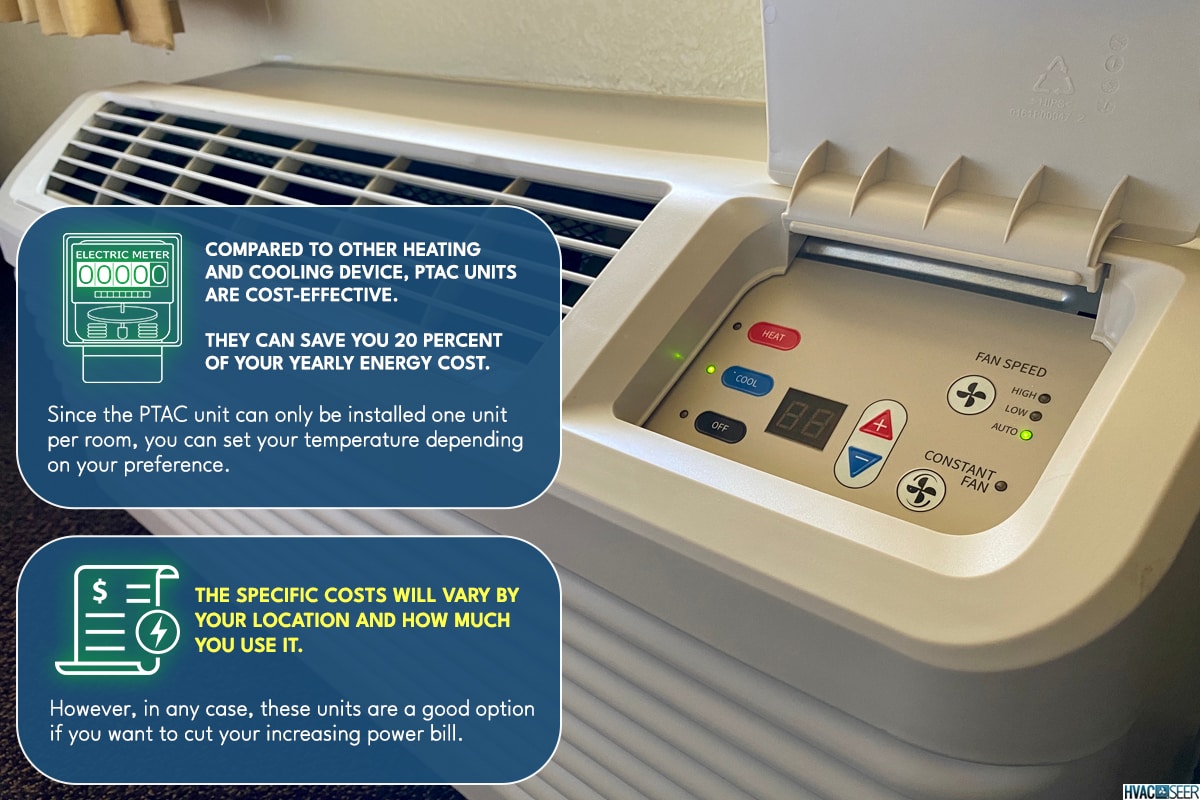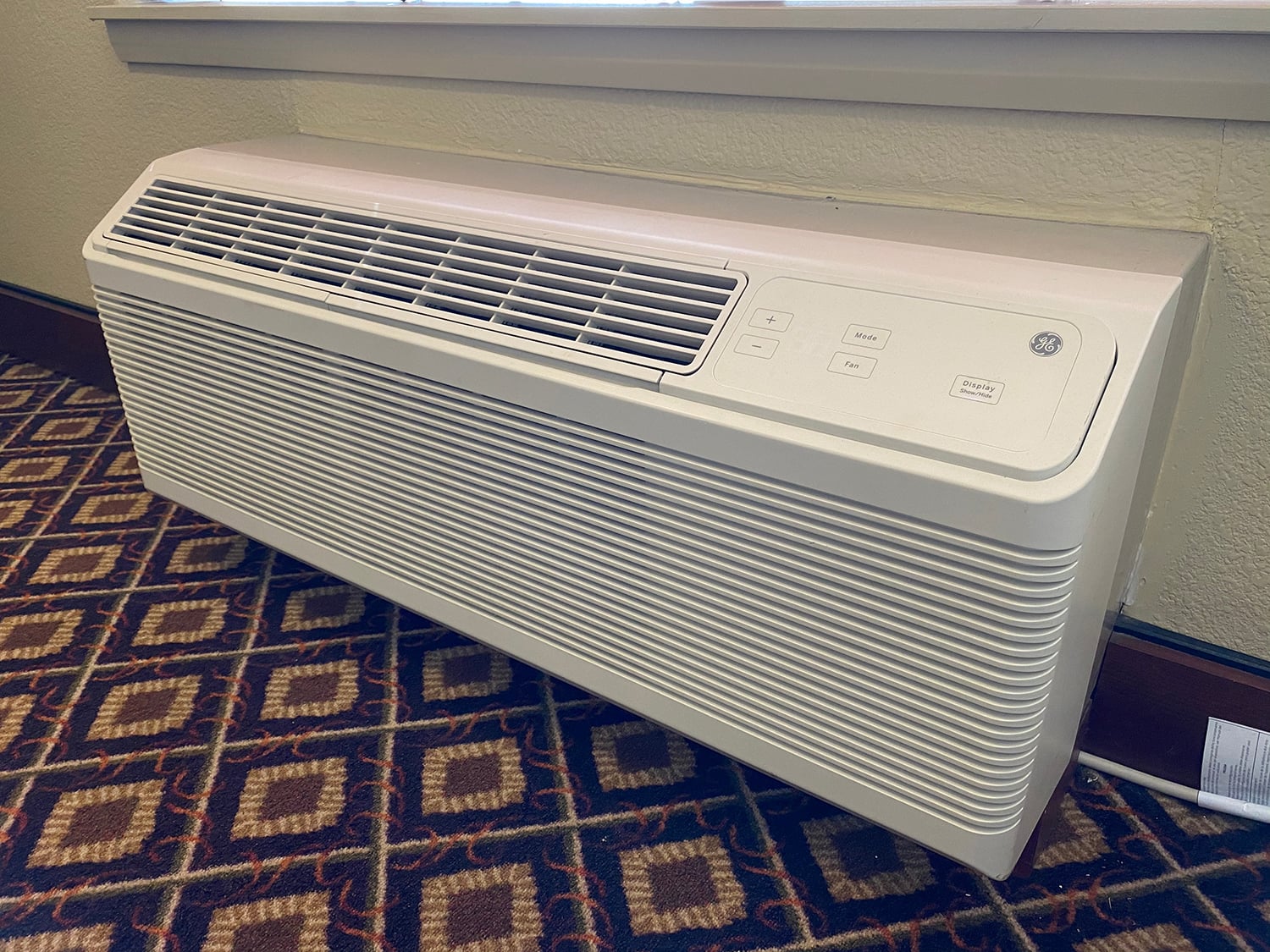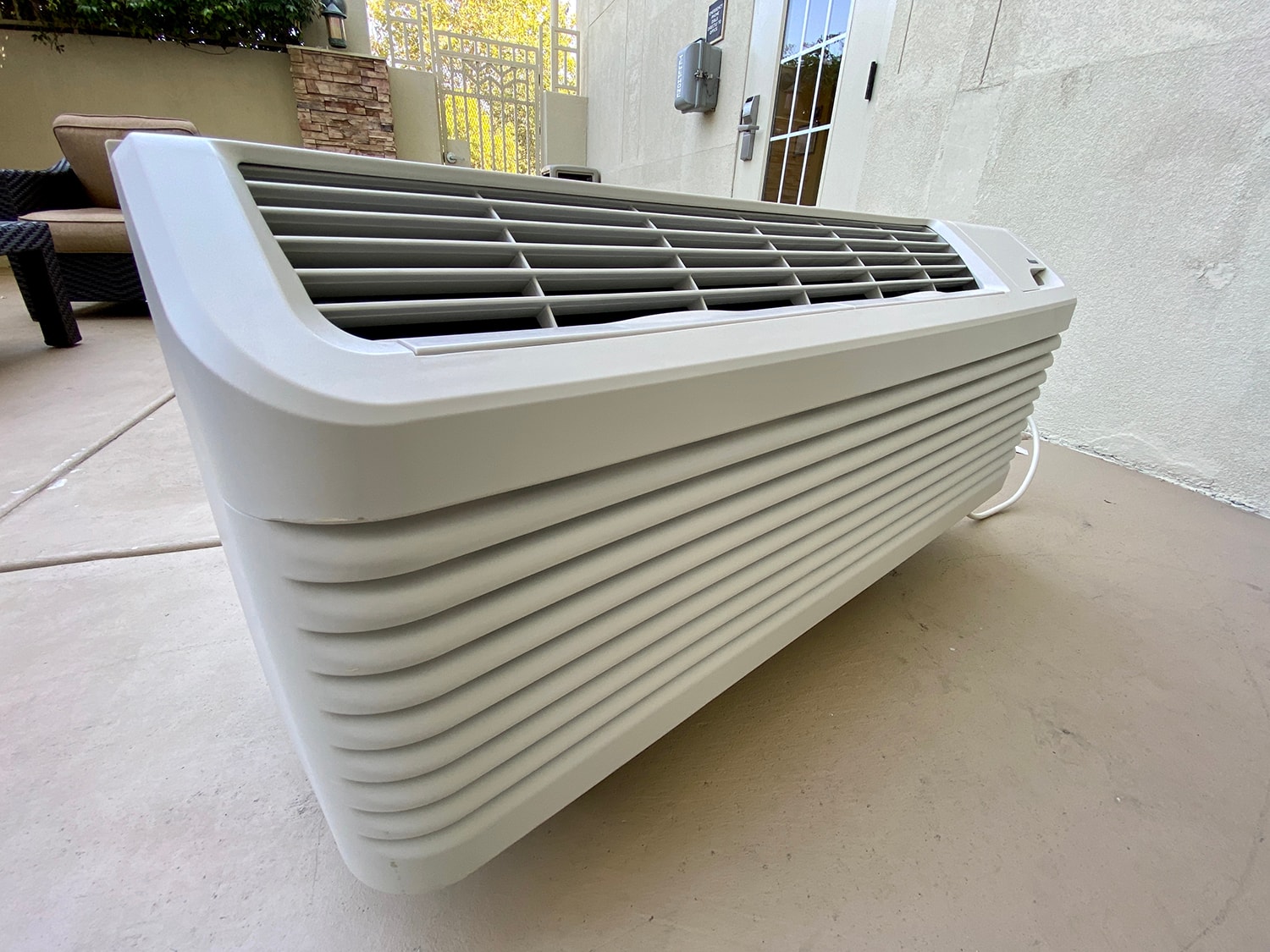Packaged terminal air conditioners, or PTACs, are useful when you want to control the temperature of an individual room or space in a building. But, how much would it cost you to run a PTAC unit? We have researched more about this topic, and we will go deeper into every detail of the PTAC unit.
Compared to other heating and cooling device, PTAC units are cost-effective. They can save you 20 percent of your yearly energy cost. Since the PTAC unit can only be installed one unit per room, you can set your temperature depending on your preference.
The specific costs will vary by your location and how much you use it. However, in any case, these units are a good option if you want to cut your increasing power bill.
In this article, we will talk more about PTAC units, their pros and cons, how to find the right one, and many more. Continue reading to learn more about these topics.

What to Consider When Buying a PTAC Unit
It is easy to find PTACs on the market. However, you need to consider different factors to choose the right one. Here are the most important things that you need to think about.

Affordability
The cost of every unit plays a big part in choosing the right PTAC unit. We highly recommend looking for an energy-efficient unit. You can help save your pocket from paying high energy bills monthly.
When you determine the cost, always consider the cost when running the unit. PTAC units use a significant amount of energy to operate. The cost will add up when you use it every day.
However, not all units are the same. PTAC units come in different price ranges. Buy one that suits your budget, and it's worth it. Once you know your price range, you can narrow down your options and find the most energy and cost-effective unit in that range.
Durability
If you invest in a PTAC unit, you want it to last a long time. Make sure to look for units that can deliver quality performance and extended life span if possible.
Check customers' reviews so you can have an idea of what the unit brings. If the unit has a lot of breakdowns and negative feedback, this is a surefire warning for you.
Go for a well-rated model from a manufacturer with a good reputation in the heating and cooling industry. The unit should get the price it deserves.
Maintenance
No matter how durable a PTAC unit is, you will always need to consider maintenance costs and the need for regular check-ups. When researching PTAC units, take note of whether they are convenient to use and projected maintenance costs.
Some brands offer easy access to condenser coils. This makes it easier to take care of some basic cleaning and maintenance yourself, which can save you money down the line.
Measurement
If you want to replace or buy a new PTAC unit, you need to make sure the right size and measurement so it perfectly fits the space.
If you are installing a unit for the first time, then you must be careful in choosing the size. Measure the area where PTAC will be installed.
Generally, PTAC units are installed at the floor level and under the windows. Make sure that the unit won’t end up too small or too large for the space.
A heat pump or electric heat
PTACs can use two methods for heating: electric heat or a heat pump.
Electric heat
PTAC units with electric heat will cost you less in advance. However, if they use more energy, you will end up spending more in the end. This unit is more powerful just like heaters. It functions as the main heater in the room.
If you plan on spending holidays in cold winters, then this type of unit is worth buying.
Heat pump
Unlike electric heat, heat pumps cost more in advance. However, they are more energy-efficient than electric heat models. Expect a decrease in power bills and end up saving your wallet.
They are generally less powerful compared to electric heat when heating a space. This is not the best option on very cold days.
Common Problems of PTAC units

Eventually, everything will have its own time to break down like many other PTAC units. While you might encounter different problems, there are other issues that you won’t expect to happen.
PTAC units do not last forever, but proper repairs and maintenance will help extend their life.
Let us look down on how you can diagnose and fix problems with your unit.
How do you troubleshoot a PTAC unit?

PTAC units with digital interfaces usually have built-in self-diagnostic features. You can easily diagnose the unit if you encounter any issues. It allows the unit to display common error codes for different problems. Each code represents different problems and shows a quick troubleshooting guide so you can take action to repair it immediately.
While this is the first step for most digital PTAC units, remember that it won’t catch all the problems. Some errors might not be caught digitally and sometimes you may need to go deeper into the machine to figure out the main problem.
Both digital and non-digital PTAC units should follow a manual troubleshooting guide to check the device when anything goes bad.
You may follow these steps.
Check the heating and cooling functions
The unit should heat up to correct and set the temperature. The cooling mode should be able to cool 25° Fahrenheit below the outdoor temperature. For example, if it is 85° outside, then the unit should be able to cool the room to 60°.
Check airflow and the cycle
PTAC units should not only produce cold and hot air. It should also blow the air out of the front unit.
Sometimes, the PTAC units freeze up when running at outdoor temperatures that are too low. This can cause mechanical problems in the unit. You may shut down the unit, allow the ice to melt, then turn it on again.
Short cycling will happen when the cooling cycle is shorter than 10 minutes. This will cause the compressor to malfunction.
When this happens, call your technician to check the unit’s mechanical parts and allow them to fix the unit.
Check wiring
Wiring should be installed appropriately following the right wiring installation.
Check the thermostat
Check if the thermostat responds to the set temperature and make sure that the compressor is working.
Issues and repairs
Faulty control board
The control board is the heart and brain of a PTAC unit. Once it stops working, all the parts are affected. While there are many causes of the faulty control boards, they may break down as the unit ages.
The electronic parts of the PTAC unit break down first. So they should be the first you check and replace as needed.
Repairing control boards takes a lot of expertise and time. It will generally save you time, money, and stress to replace the entire unit with a new one.
Bad motor
There are times when the motor yields heat but no presence of airflow. The problem here is the blower motor.
In a case like this, check the capacitor which aids the motor to run. If the capacitor does not operate well, then the motor won’t start. Sometimes, this could be the main issue and needs replacement.
You cannot have the main source of heat when the condenser motor is not working. The motor should extract heat behind the unit and this may cause a temperature issue.
Rusty heat kit
Sometimes, condensation causes excess moisture at the bottom of a PTAC unit. In this case, rusting may become possible for the heat kit which stops it from working. With this, some units with built-in heat pumps receive heat but deprive of the heat kit. This makes the PTAC unit less powerful.
Furthermore, the heat kit is not the main issue but the wirings that connect them. Wires can absorb the water and destroys the connection.
You may fix the issue by replacing the heat kit and supplemental parts. This may bring back the function of the said unit and may start working accurately.
Wrapping Up

PTAC unit is an energy-efficient choice for both cooling and heating. While the operating costs will vary depending on how much and where you use them, they will save you money on each electric bill compared with conventional units.
We hope that this article helps you find the right PTAC unit based on your needs. If you find this article helpful, you may read these other related posts:
What Is The Quietest PTAC Unit?
